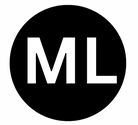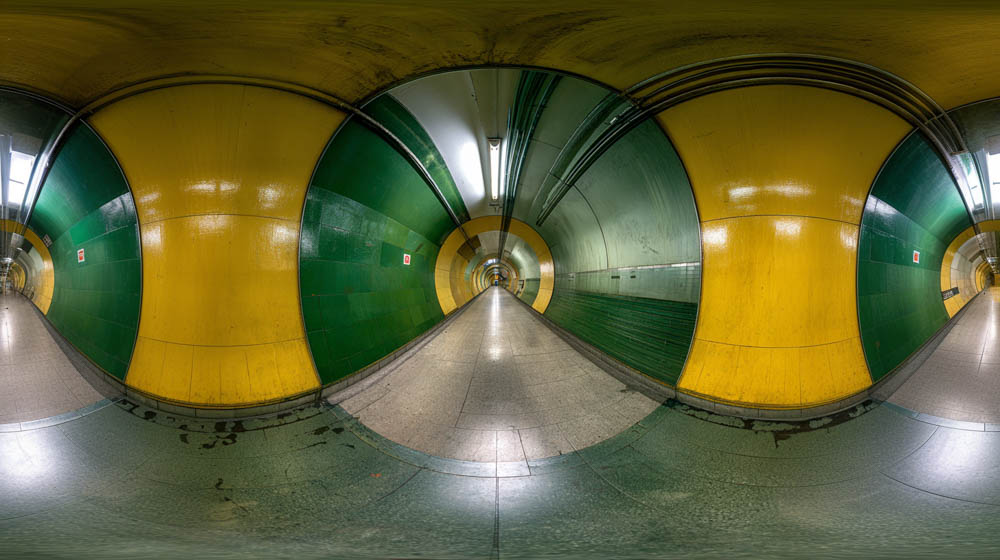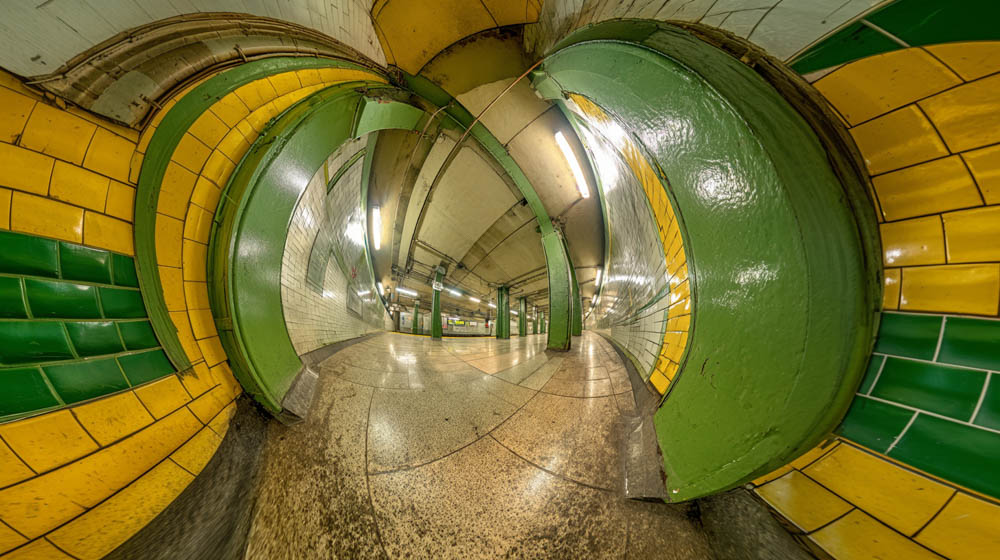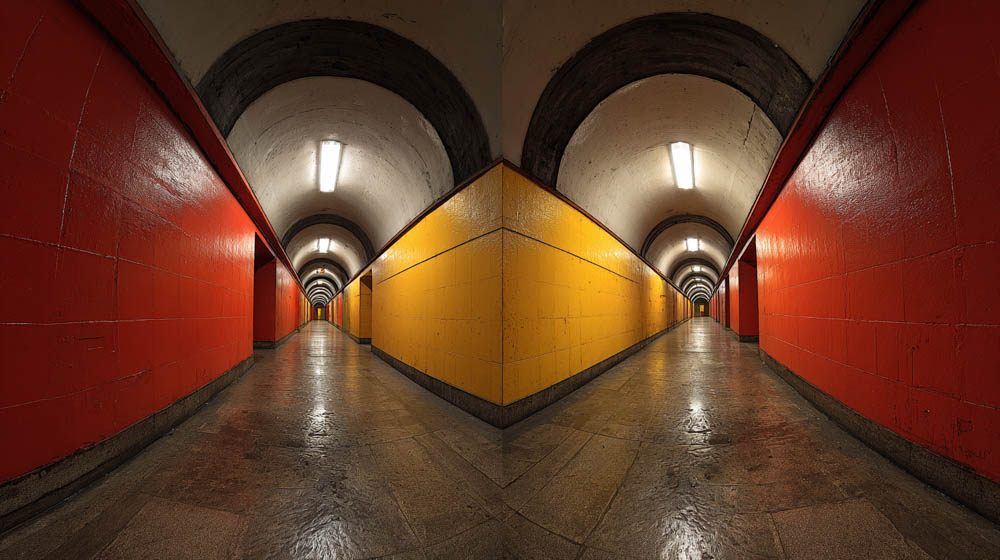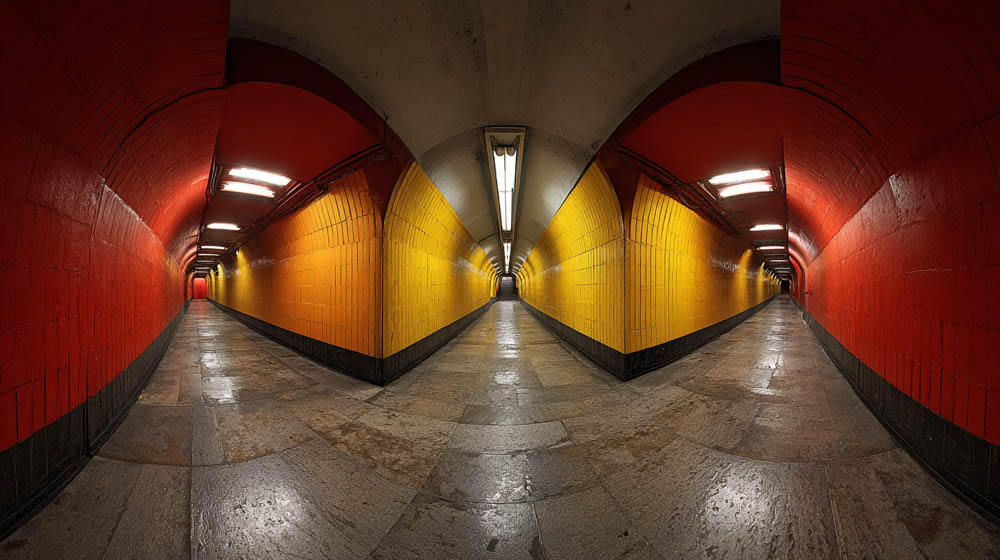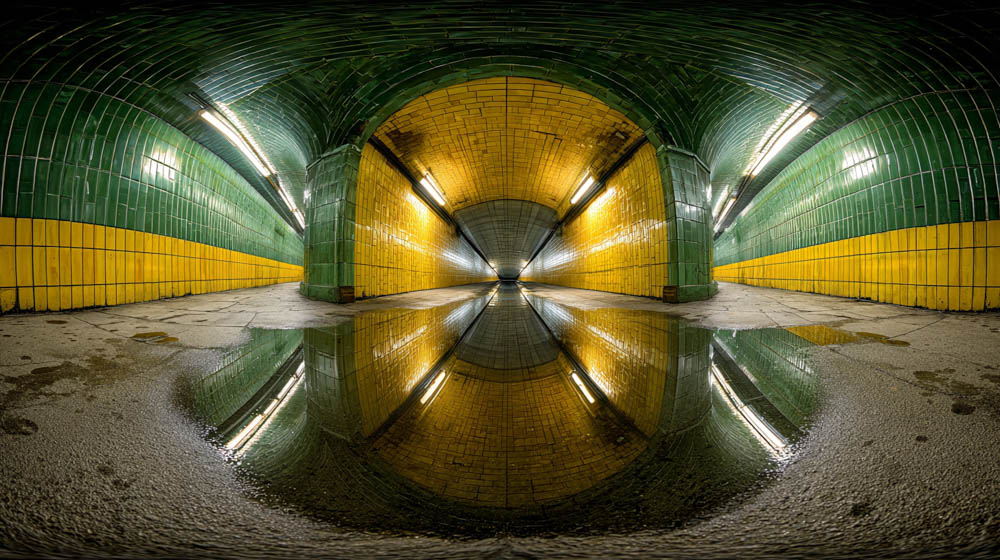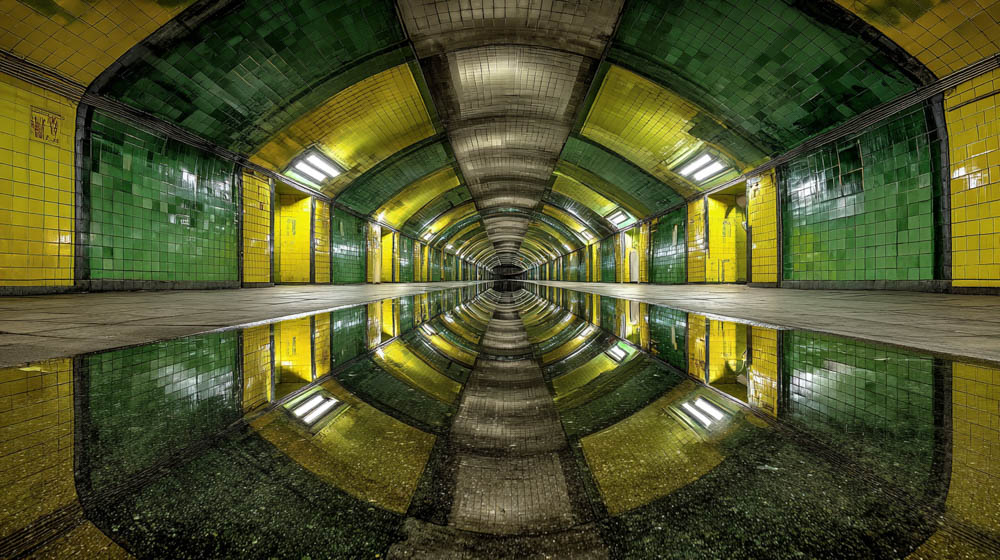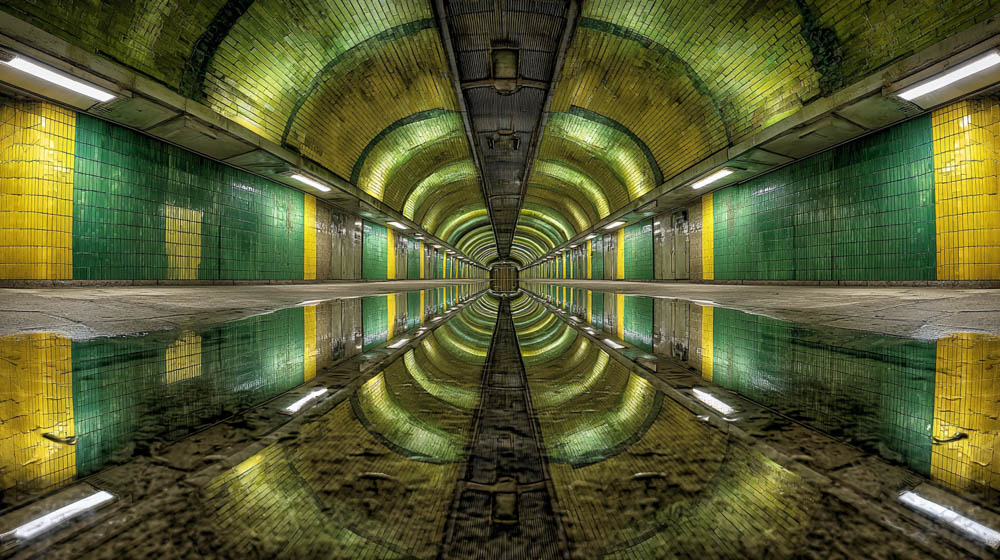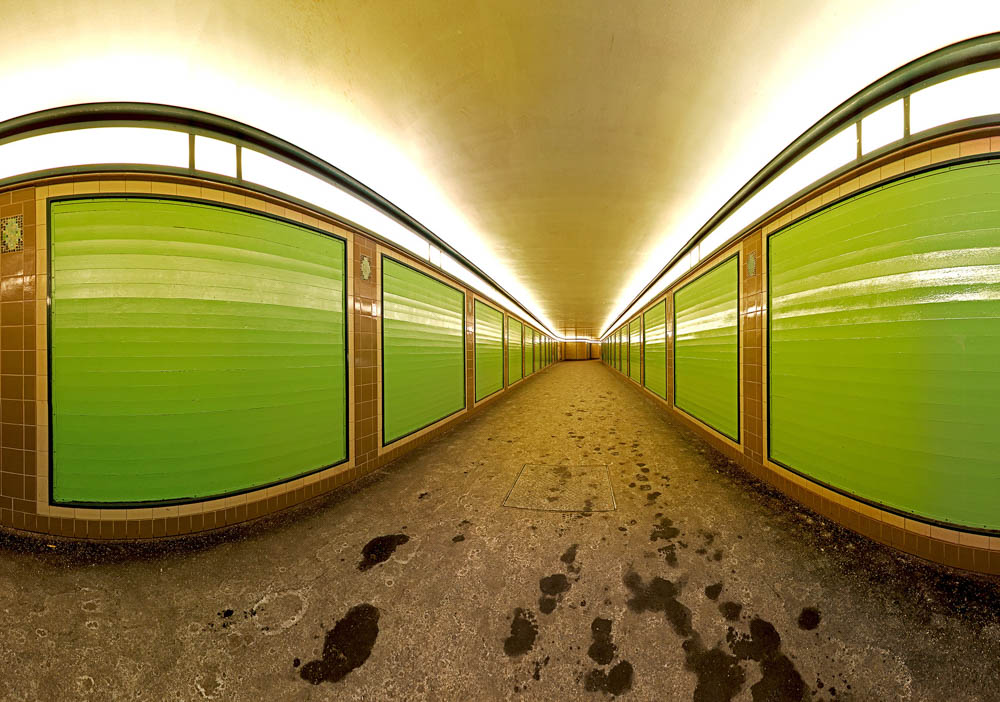
2010
Project 2010 documentation—from history to dissolution
Projekt 2010 dokumentation – von der Geschichte bis zur Auflösung
Individual photographs—taken with a digital SLR camera, fisheye lens, and nodal point adapter—at night in the Berlin Potsdamer Platz subway station.
Einzelne Fotografien – erstellt mit digitaler Spieglerefexkamera, Fischeye Objektiv und Nodalpunktadapter – Nachts in der Ubahn Station Berlin Potzdamer Platz.
Stitched 360° panorama converted to 2D, colors, sharpness, and contrast edited with Photoshop. NO AI!
Zusammengefügtes 360° Panarama auf 2D abgewickelt, Farben, Schärfe und Kontraste mit Photoshop nachbearbeitet. KEINE KI!

AI “mirrored” videos – interpreted by Google Veo and Midjourney
Mit AI “gespiegelte” Videos – interpretiert durch Google Veo und Midjourney
Images “mirrored” with AI – interpreted by Midjourney
Mit AI “gespiegelte” Bilder – interpretiert durch Midjourney
Version reworked with Photoshop – complete abstraction – complete dissolution of the original image
Erneut mit Photoshop nachbearbeitete Version – komplette Abstraktion – komplette Auflösung der ursprünglichen Aufnahme
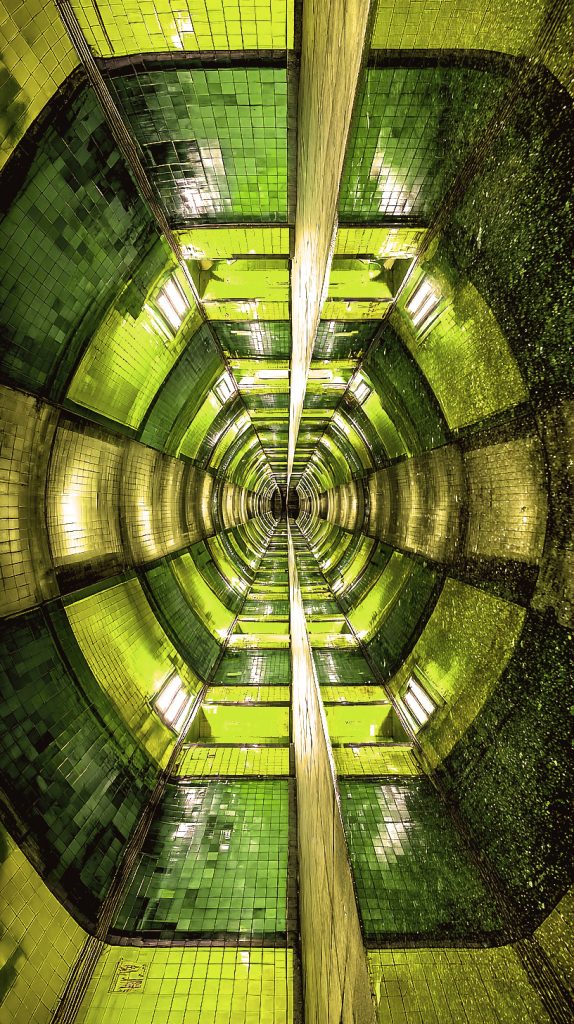
Dissolution at Potsdamer Platz
Technology, history, and the philosophy of an image
1. Location: The threshold as a motif
The image was created at a location steeped in world history: the Potsdamer Platz subway station in Berlin. Until German reunification in 1989/90, this was the site of one of the so-called ghost stations—stations that trains from West Berlin passed under without stopping, monitored, barricaded, sealed in a time capsule. This place alone is a school of dissolution: dissolution of urban continuity, of movements, of biographies; dissolution of the topographical self-evidence of a metropolis into political fragments. For decades, the station was present and at the same time withdrawn—a space in which time did not progress but patinated.
Now that trains are stopping there again, traces remain: cracks in surfaces, small inconsistencies in the grid, the knowledge of what came before. The image ties in with this double stratification—it shows the present remembering its own interruption. Here, dissolution does not merely mean decay, but the visibility of the dividing lines that carry the visible.
2nd shot: Precision as a prerequisite for metamorphosis
The photograph was taken in the middle of the night, shortly before closing time, not to invent the emptiness, but to find it. Technically, it is a controlled experiment: a digital SLR camera on a tripod, equipped with a fisheye lens and a nodal point adapter (panoramic head). The latter sets the optical center of the system in such a way that parallax errors are minimized—a methodical response to the problem of bringing together multiple axes of vision in a consistent spatial concept.
The environment was captured in 15 individual steps. Each image is a measurement of light, depth, and texture; together they form a data set of the location. The images were then assembled into a 360° panorama using specialized stitching software and color- and tone-corrected in Photoshop. The result is initially a spherical statement: a complete, enveloping space.
3. Unwrapping: From sphere to surface
The 360° image was then “unwrapped”—transformed from a sphere into a two-dimensional projection. Projections are never innocent: every decision (e.g., equirectangular, cylindrical) constructs a worldview. The surreal-looking distortions are not errors, but justifications. They answer—technically precise, aesthetically visible—the question of how a physical space can be conceived as a surface.
Understood in this way, the unfolding is a philosophy of transition: it transforms place into geometry, depth into proportion, movement into curvature. What was at the edge of the sphere stretches out; what was in front smoothes out; symmetries emerge that did not exist in real space. The image is real (not an AI render), but already dissolved—in the sense that it reformulates what is seen through mathematical precision.
4. Truth and construction: document as construction
Photography is a document, but every document is a construction. Exposure time, focal length, white balance—these are not mere settings, but premises. Stitching eliminates breaks, retouching aligns tones, projection rearranges perspectives. What is called “optimization” is in fact an argument about the visible. Thus, the single image dissolves into a chain of decisions; its “truth” lies in the process, not in a supposedly neutral moment.
5. Reflection through machines: Algorithmic co-authorship
On this basis, various AI tools were used to create reflections of the original: algorithmic interpretations that reflect, duplicate, and transform the initial situation. Reflections have always been a means of creating ambiguity in art; here, the algorithm takes on this role. It is not an oracle, but an operator: it continues patterns, shifts symmetries, and overturns stabilities.
Philosophically, this means a further dissolution: authorship is distributed. The subject (the photographer) remains the creator of the source material and the decisions, but the machine is the co-author of the form. What emerges is cooperative mimesis—a dialogue between intended gesture and statistical anticipation. AI does not merely reflect, it argues along. This is precisely why it is important to note: the origin is photographically real; the machine moves in the field of derivations.
6. Tilting toward abstraction: the final stage of dissolution
In the last step, the image was tilted and edited again in Photoshop. The tilting is more than an effect: it is a decoupling of gravity and motif. Top and bottom lose their primacy; orientation becomes a question, not a prerequisite. Architecture becomes rhythms, lines of sight become streams, signage becomes sign bodies without referents.
Here, the process culminates in abstraction—not as a renunciation of reality, but as a revelation of its formal conditions. The station remains present as a force field: as a pulse of repetition and interruption, as an alternation of smooth and rough, light and dark. Reality is not denied; it is transformed into structure.
7. Meanings of “resolution”
The German term Auflösung (resolution) combines several layers that converge in this project:
- Technically: resolution as level of detail (pixels, line pairs per millimeter), but also as fineness of decisions—stitching tolerances, projections, masks, tone curves.
- Historically: resolution as the end of a regime, as the dismantling of border logics. The ghost station refers to the resolution of division and to the continuation of its scars in the city’s memory.
- Philosophically: dissolution as transduction—the transformation of the world into numbers, of numbers into form, of form into meaning. Nothing disappears; everything changes its state of aggregation.
- Aesthetically: dissolution as composition—the dismantling and reassembly of gazes, the suspension of gravity, the exposure of patterns that only become expressive on the surface.
- Musical: Dissolution as cadence—the tension that resolves itself. Here it is not calmed, but becomes productive unrest: a cadence without a final stroke.
8. Ethics of form
In times when images are created en masse through synthetic processes, this work insists on an ethical trace: it begins in the world. The light is real, the emptiness is not simulated chance, but approximately zero—achieved through time, planning, patience. The subsequent steps—software, projection, AI mirrors, abstraction—are interpretations of this reality, not an escape from it.
The project proposes not to divide between “real” and “artificial,” but to understand the process as the actual space of truth. Resolution would then be the art of making commitments visible: which assumptions, which calculation methods, which gestures carry an image—and thus our knowledge of a place.
9. Return to the train station
In the end, the gaze returns to Potsdamer Platz, not as a train station, but as a concept: a crossroads of paths, times, systems of representation. Once a ghost station, today a hub—and in this image, a laboratory arrangement in which history, mathematics, and art project into one another.
The dissolution proves to be not decay, but solution—in the chemical sense: something is transferred into another medium in order to become visible. The image dissolves the place into form, the form into meaning, the meaning into experience. And perhaps that is precisely what an image can do today: show the conditions of its own possibility—and thus teach us to see more precisely.
Auflösung am Potsdamer Platz
Technik, Geschichte und die Philosophie eines Bildes
1. Ort: Die Schwelle als Motiv
Das Bild entstand an einem welthistorisch aufgeladenen Ort: dem U-Bahnhof Potsdamer Platz in Berlin. Bis zur deutschen Wiedervereinigung 1989/90 lag hier einer der sogenannten Geisterbahnhöfe—Stationen, die Züge aus West-Berlin unterquerten, ohne zu halten, überwacht, verbarrikadiert, in eine Zeitkapsel versiegelt. Schon dieser Ort ist eine Schule der Auflösung: Auflösung der städtischen Kontinuität, der Bewegungen, der Biografien; Auflösung der topografischen Selbstverständlichkeit einer Metropole in politische Fragmente. Der Bahnhof war jahrzehntelang präsent und zugleich entzogen—ein Raum, in dem die Zeit nicht fortschritt, sondern patinierte.
Wenn heute die Züge wieder halten, bleiben Spuren: Risse in Oberflächen, kleine Unstimmigkeiten im Raster, das Wissen um das „Davor“. Das Bild knüpft an diese doppelte Schichtung an—es zeigt Gegenwart, die ihre eigene Unterbrechung erinnert. Auflösung bedeutet hier nicht bloß Zerfall, sondern das Sichtbarwerden der Trennungslinien, die das Sichtbare tragen.
2. Aufnahme: Präzision als Voraussetzung der Metamorphose
Entstanden ist die Fotografie mitten in der Nacht, kurz vor Betriebsschluss, um die Leere nicht zu erfinden, sondern vorzufinden. Technisch ist sie ein kontrolliertes Experiment: eine digitale Spiegelreflexkamera auf Stativ, bestückt mit Fisheye-Objektiv und Nodalpunkt-Adapter (Panoramakopf). Letzterer setzt das optische Zentrum des Systems so, dass Parallaxefehler minimiert werden—eine methodische Antwort auf das Problem, mehrere Blickachsen in einem konsistenten Raumdenken zu versammeln.
Die Umgebung wurde in 15 Einzelschritten erfasst. Jedes Bild ist eine Messung von Licht, Tiefe, Textur; gemeinsam ergeben sie einen Datensatz des Ortes. Die Aufnahmen wurden anschließend in spezialisierter Stitching-Software zu einem 360°-Panorama zusammengesetzt, farblich und tonwertlich in Photoshop nachgeführt. Das Ergebnis ist zunächst eine sphärische Aussage: ein vollständiger, umhüllender Raum.
3. Abwicklung: Von der Sphäre in die Fläche
Die 360°-Aufnahme wurde anschließend „abgewickelt“—von der Kugel- in eine zweidimensionale Projektion überführt. Projektionen sind nie unschuldig: Jede Entscheidung (z. B. equirektangular, zylindrisch) baut eine Weltansicht. Die surreal wirkenden Verzerrungen sind keine Fehler, sondern Begründungen. Sie beantworten—technisch präzise, ästhetisch sichtbar—die Frage, wie ein körperlicher Raum sich als Fläche denken lässt.
So verstanden ist die Abwicklung eine Philosophie des Übergangs: Sie verwandelt Ort in Geometrie, Tiefe in Verhältnis, Bewegung in Kurvaturen. Was am Rand der Sphäre war, streckt sich; was vorn war, glättet sich; Symmetrien entstehen, die im realen Raum nicht existierten. Das Bild ist real (kein KI-Render), aber schon aufgelöst—in dem Sinne, dass es das Gesehene durch mathematische Sorgfalt umformuliert.
4. Wahrheit und Konstruktion: Dokument als Konstruktion
Die Fotografie ist ein Dokument, doch jedes Dokument ist eine Konstruktion. Belichtungszeit, Brennweite, Weißabgleich—dies sind nicht bloße Einstellungen, sondern Prämissen. Das Stitchen hebt Brüche auf, das Retuschieren richtet Töne aus, die Projektion ordnet Perspektiven neu. Was man „Optimierung“ nennt, ist in Wahrheit eine Argumentation über das Sichtbare. So löst sich das eine Bild in eine Kette von Entscheidungen auf; seine „Wahrheit“ liegt im Prozess, nicht in einem angeblich neutralen Augenblick.
5. Spiegelung durch Maschinen: Algorithmische Ko-Autorschaft
Auf dieser Grundlage entstanden mit verschiedenen KI-Werkzeugen Spiegelungen des Originals: algorithmische Interpretationen, die die Anfangssituation reflektieren, vervielfältigen und transformieren. Spiegelungen sind seit je Mittel der Kunst, Ambiguität zu erzeugen; hier übernimmt der Algorithmus diese Rolle. Er ist kein Orakel, sondern ein Operator: Er schreibt Muster fort, verschiebt Symmetrien, kippt Stabilitäten.
Philosophisch bedeutet das eine weitere Auflösung: Die Autorenschaft verteilt sich. Das Subjekt (die Fotografin/der Fotograf) bleibt Urheber*in des Ausgangsmaterials und der Entscheidungen, doch die Maschine ist Mit-Autorin der Formbildung. Was entsteht, ist kooperative Mimesis—ein Dialog zwischen intendierter Geste und statistischer Antizipation. Die KI spiegelt nicht bloß, sie argumentiert mit. Gerade deshalb ist es wichtig festzuhalten: Der Ursprung ist fotografisch real; die Maschine bewegt sich im Feld der Ableitungen.
6. Kippen zur Abstraktion: Letzte Stufe der Auflösung
Im letzten Schritt wurde das Bild gekippt und erneut in Photoshop bearbeitet. Das Kippen ist mehr als ein Effekt: Es ist eine Entkopplung von Gravitation und Motiv. Oben und unten verlieren ihren Vorrang; Orientierung wird zur Frage, nicht zur Voraussetzung. Aus Architektur werden Rhythmen, aus Fluchtlinien Ströme, aus Beschilderungen Zeichenkörper ohne Referent.
Hier mündet der Prozess in Abstraktion—nicht als Verzicht auf Wirklichkeit, sondern als Enthüllung ihrer formalen Bedingungen. Der Bahnhof bleibt anwesend als Kraftfeld: als Puls von Wiederholung und Unterbrechung, als Wechsel von Glatt und Rau, Hell und Dunkel. Die Wirklichkeit wird nicht geleugnet; sie wird in Struktur überführt.
7. Bedeutungen der „Auflösung“
Der deutsche Begriff Auflösung bündelt mehrere Schichten, die in diesem Projekt zusammenlaufen:
- Technisch: Auflösung als Detailgrad (Pixel, Linienpaare pro Millimeter), aber auch als Feinheit der Entscheidungen—Stitching-Toleranzen, Projektionen, Masken, Tonkurven.
- Historisch: Auflösung als Ende eines Regimes, als Abbau von Grenzlogiken. Der Geisterbahnhof verweist auf die Auflösung der Teilung und auf die Fortsetzung ihrer Narben im Stadtgedächtnis.
- Philosophisch: Auflösung als Transduktion—die Verwandlung von Welt in Zahlen, von Zahlen in Form, von Form in Bedeutung. Nichts verschwindet; alles ändert Aggregatzustand.
- Ästhetisch: Auflösung als Komposition—das Zerlegen und Neusetzen von Blicken, das Aussetzen der Gravitation, die Freilegung von Mustern, die erst in der Fläche sprechfähig werden.
- Musikalisch: Auflösung als Kadenz—die Spannung, die sich einlöst. Hier wird sie nicht beruhigt, sondern produktive Unruhe: eine Kadenz ohne Schlussstrich.
8. Ethik der Form
In Zeiten, in denen Bilder massenhaft durch synthetische Verfahren entstehen, insistiert dieses Werk auf einer ethischen Spur: Es beginnt in der Welt. Das Licht ist real, die Leere ist nicht simulierter Zufall, sondern näherungsweise Null—erarbeitet durch Zeit, Planung, Geduld. Die nachfolgenden Schritte—Software, Projektion, KI-Spiegel, Abstraktion—sind Auslegungen dieser Wirklichkeit, keine Flucht vor ihr.
Das Projekt schlägt vor, nicht zwischen „echt“ und „künstlich“ zu spalten, sondern den Prozess als eigentlichen Wahrheitsraum zu begreifen. Auflösung wäre dann die Kunst, Verbindlichkeiten sichtbar zu machen: welche Annahmen, welche Rechenwege, welche Gesten ein Bild—und damit unser Wissen von einem Ort—tragen.
9. Rückkehr zum Bahnhof
Am Ende kehrt der Blick zum Potsdamer Platz zurück, nicht als Bahnhof, sondern als Begriff: ein Kreuzungspunkt von Wegen, Zeiten, Systemen der Darstellung. Einst Geisterbahnhof, heute Knoten—und in diesem Bild eine Laboranordnung, in der Geschichte, Mathematik und Kunst ineinander projizieren.
Die Auflösung erweist sich dabei nicht als Zerfall, sondern als Lösung—im chemischen Sinn: Etwas wird in ein anderes Medium überführt, um sichtbar zu werden. Das Bild löst den Ort in Form, die Form in Bedeutung, die Bedeutung in Erfahrung. Und vielleicht ist es genau das, was ein Bild heute leisten kann: die Bedingungen seiner eigenen Möglichkeit zeigen—und uns so lehren, präziser zu sehen.
